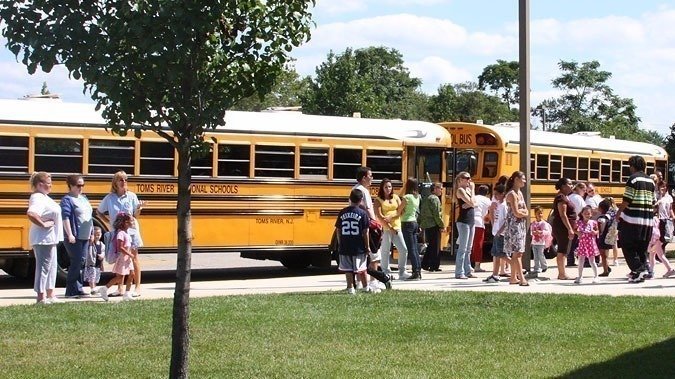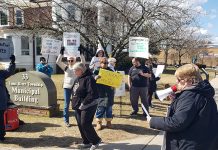
TOMS RIVER – Senate President Stephen Sweeney told a group of school representatives from throughout the state that he wants to allow districts to raise more in taxes to fill a hole in state funding.
Several officials have already responded that this doesn’t really solve the problem, because it still has a negative impact on residents. They said that residents shouldn’t be fixing Trenton’s problem.
At issue is bill S-2, which was proposed by Sweeney and signed by Gov. Phil Murphy. It has resulted in millions of dollars of “adjustment aid” cuts to districts that were deemed to be overfunded because they were losing enrollment. In Toms River, this has resulted in the loss of dozens of positions. After-school activities are currently being discussed as possibly being cut.
“It was never the intent to hurt any schools,” Sweeney said, as reported in NJSpotlight.
He was speaking at a recent meeting of the New Jersey School Boards Association delegate assembly, where he got an earful from people unhappy with S-2, according to NJSpotlight.com. His response was to waive the 2 percent cap so school districts can tax more.
The 2 percent cap means that a district can’t raise taxes more than 2 percent. It was put in place to control spending, but it has had some side effects. When a district has a sudden hole in their budgets, they simply aren’t legally allowed to raise taxes to fill it.
Sweeney has proposed allowing the hardest-hit districts to tax more than 2 percent in order to make up for the problems that his bill caused.
Toms River Superintendent David Healy said that more taxing doesn’t answer the district’s concerns or fix the flaws in the funding formula.
“The Senate President (Sweeney) really hasn’t budged on his position and is pushing legislation that simply allows school districts to tax more even if, as with Toms River, we tax less because we spend less and are among the lowest in per pupil costs,” he said. “He believes the formula is fine the way it is.”
One point that has stuck with school officials is that the Department of Education has refused a public records request to show their math. The state has called the formula “proprietary” and therefore they can’t make it public.
Healy said this is $6.5 billion in aid, which makes up 17 percent of the state budget. During the NJSBA delegate assembly, Sweeney answered a question that he was not aware that the state refused to release the information.
“The (school funding) formula has material flaws, and in my opinion, those flaws should absolutely be addressed before any district has to go to their taxpayers,” Toms River Schools Business Administrator William Doering said.
Toms River Council President George Wittmann Jr. spoke out against it at a Township Council meeting.
“That’s not really a plan,” he said. “It’s a bad idea.”
He said if the district raises the millions of dollars needed, it would have a devastating impact on the community.
Mayor-elect Maurice Hill noted that there’s an emergency aid request that was sent to the governor and all he has to do is sign it to solve the problem.
Gov. Murphy is also not a fan of the plan to raise taxes.
“Before middle-class property taxpayers have to again take it on the chin, we should be asking our wealthiest residents to pay their fair share through a millionaire’s tax and undoing Governor (Chris) Christie’s tax gimmicks, including the sales tax reduction. We have a broadly-popular plan for investing more deeply in our school districts without requiring them to raise property taxes,” he said.
“The school funding law was amended last year by the Governor and Legislative Leadership to put us back into alignment with New Jersey’s school funding law and put NJ on a path to fully funding the state’s portion of the funding formula,” said Murphy’s press secretary, Alyana Alfaro Post. “After eight years of our schoolchildren being held captive to politics, Governor Murphy’s Administration is actively working to ensure that facts and reality guide our school funding discussion. We are now on the path to funding schools based on fair and objective criteria including enrollment trends and special needs populations. The Administration is open to engaging with all districts to discuss solutions, but the state has an obligation to fund schools according the law.”







